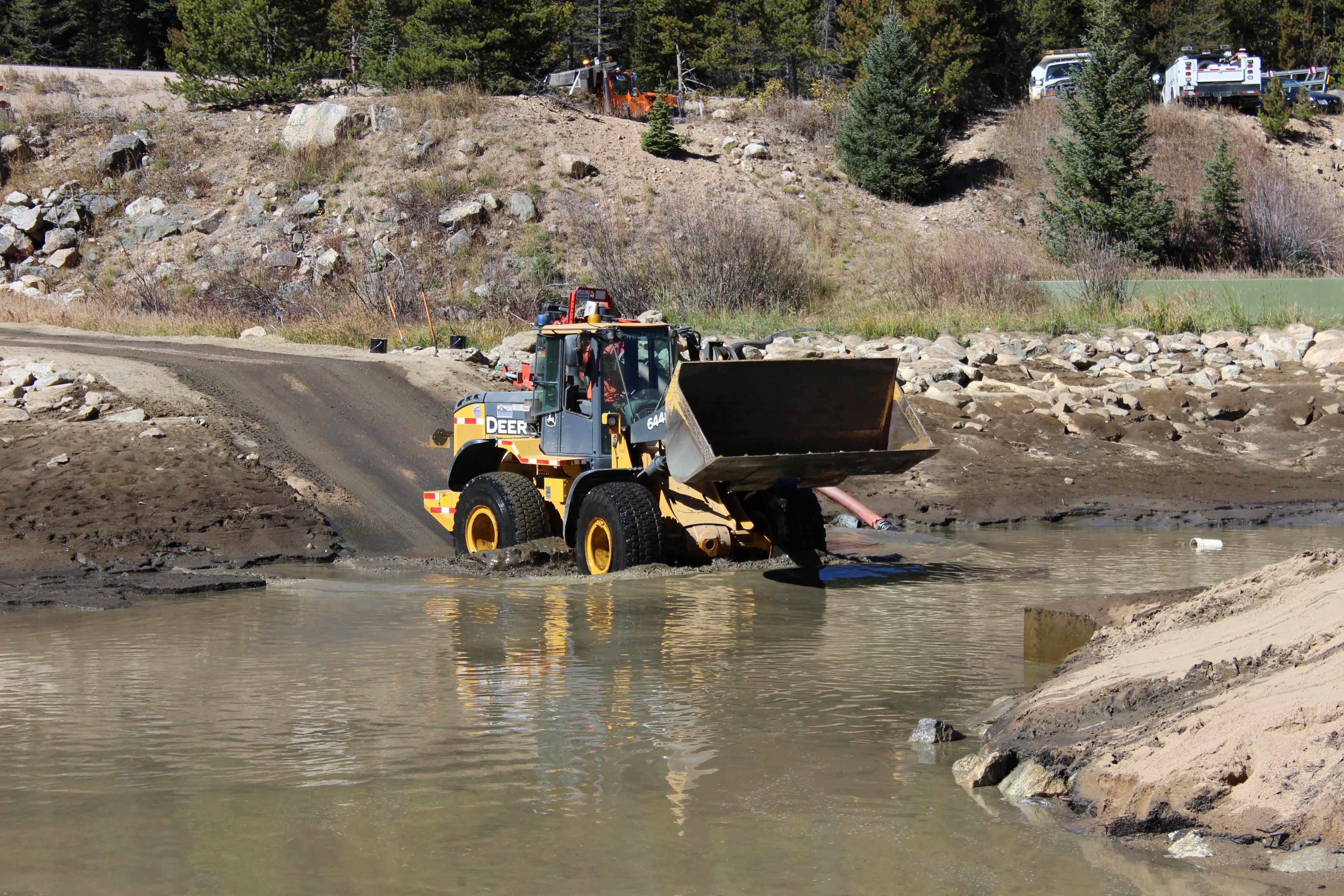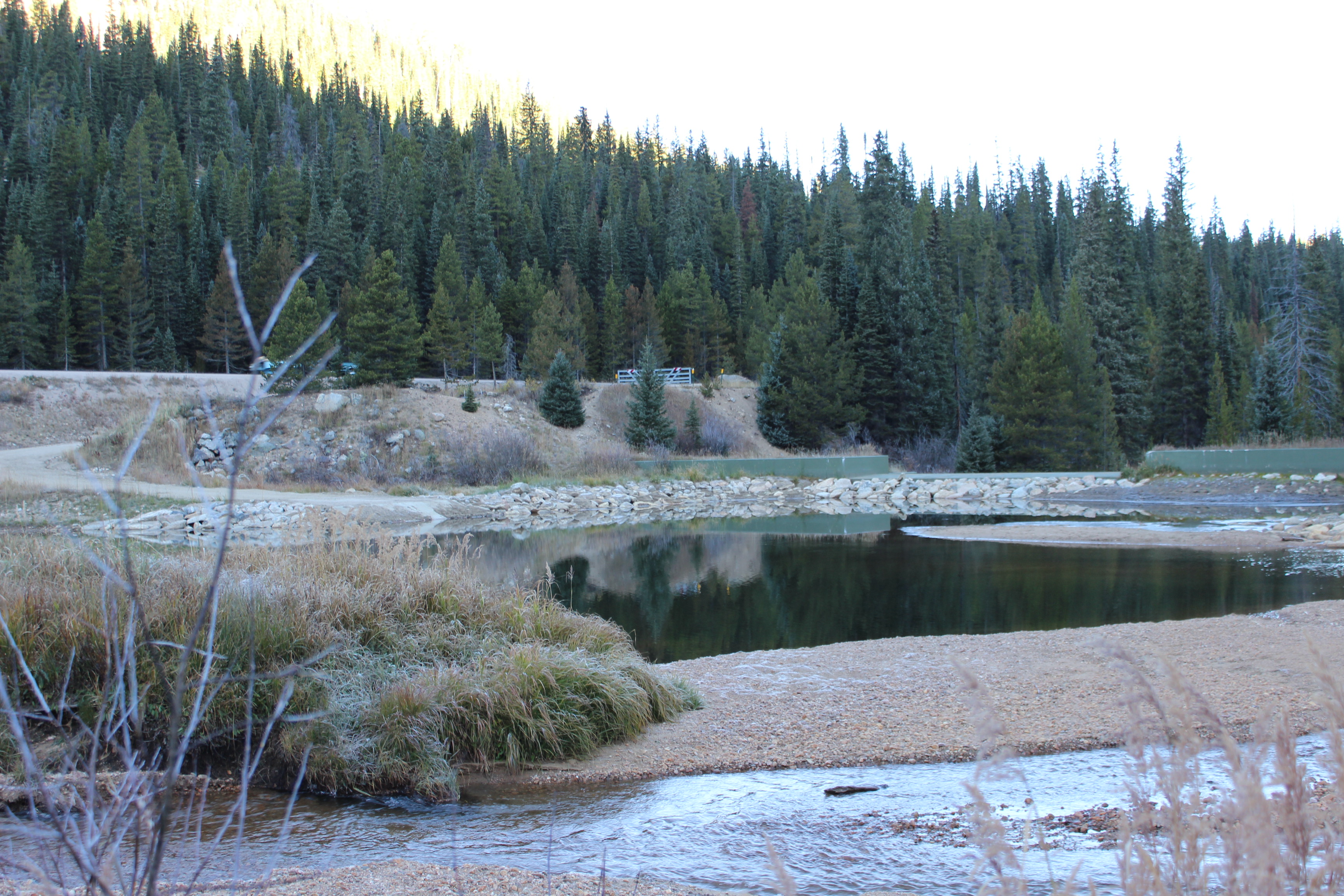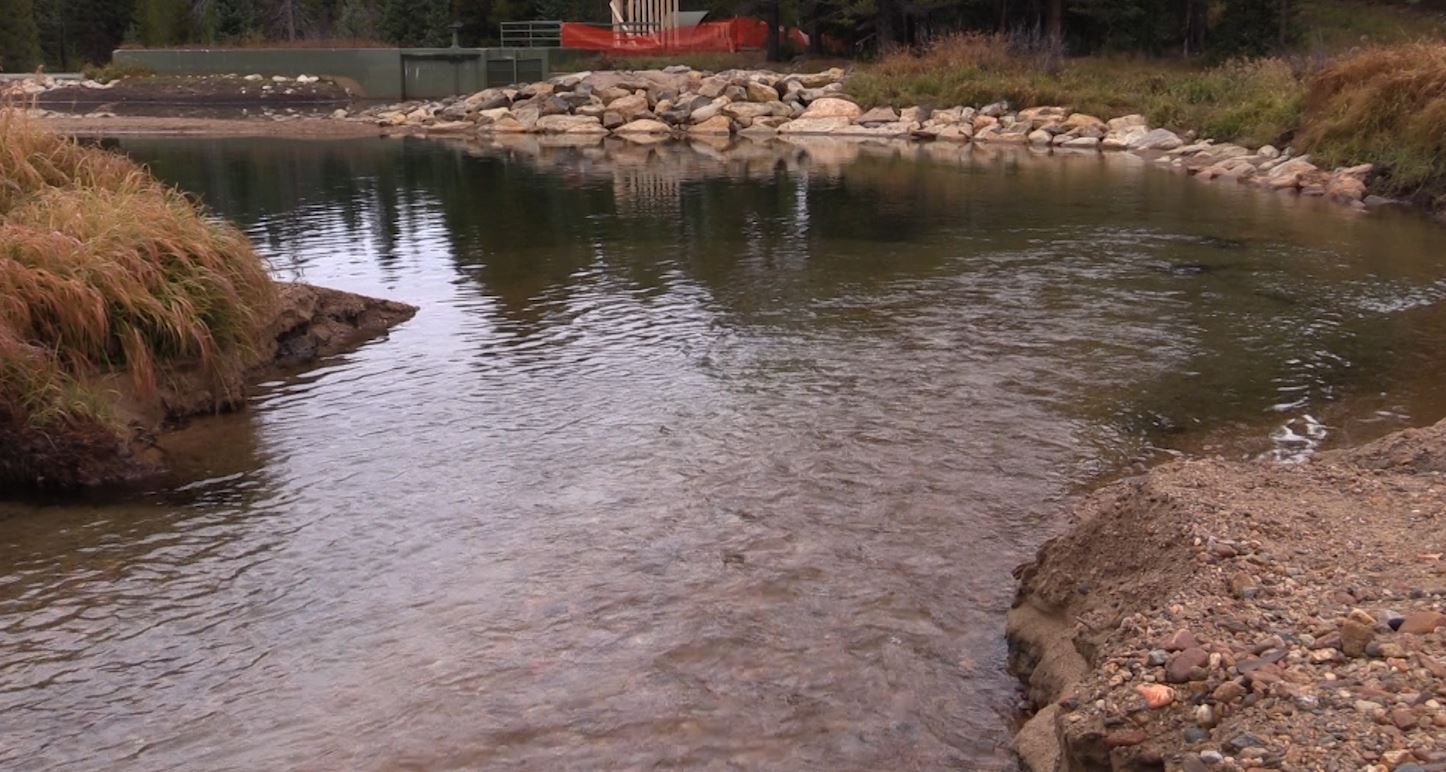
Good for drivers, bad for the Fraser River
The Fraser River is showing signs of recovery, thanks to an ongoing project that has removed nearly 2,000 tons of sand and sediment from the water in the past three years.
It has become an annual routine for Colorado Department of Transportation crews in Grand County. In the winter, they spread traction sand on Berthoud Pass to keep the winding highway safe for cars. In the fall, the same crews scoop out sand that migrates into the river.
Keeping both drivers and water safe has been a high-country dilemma for decades.
“We see 300 to 400 inches of snow a year, so traction sand is a must,” said Andy Hugley, CDOT maintenance superintendent.
There is one major consequence of keeping the road safe. “Sanding the pass is good for cars, but it’s bad for the river,” added Kevin Urie, Denver Water environmental scientist.
Urie said traction sand collects on the side of the highway and washes down the mountain during the spring runoff, harming the aquatic habitat while clogging pipes and filters at downstream water treatment facilities.
The Fraser River is critical to Grand County’s water supply and tourism, especially fly-fishing. That’s why removing traction sand is so important according to Kirk Klancke, Trout Unlimited Colorado River headwaters chapter president and former president of the East Grand Water Quality Board.
“When it comes to traction sand, fish don’t like it, bugs don’t like it,” Klancke said. “When you cover up the rocks where the bugs live, the bugs die, and the trout disappear because their food source is gone.”
This fall, CDOT removed about 520 tons of sediment from a Denver Water diversion pond located on the river across from the Mary Jane entrance to the Winter Park Ski Resort. The pond was originally built as part of Denver Water’s Moffat Collection System to help bring water to the Front Range. In 2011, it was redesigned to trap the traction sand.
The project got its first test in 2013 and has been a big success. Water treatment operators have noticed a significant improvement in the quality of the water, and trout populations are showing signs of recovery.
Redesigning the pond took years of collaboration and money from multiple partners, including Denver Water, CDOT, East Grand Water Quality Board, Grand County and the Town of Winter Park. Federal and state agencies, including the U.S. Forest Service, U.S. Army Corps of Engineers and Colorado Parks and Wildlife, also collaborated on the project.
Denver Water provided an additional $50,000 as part of the Colorado River Cooperative Agreement — a pact signed by 18 organizations, including Denver Water, on how to manage the Colorado River.
The pond is the first project completed with funding from the agreement. “This is a great sign that collaboration does work. It’s exciting for me to see this project operating and improving the aquatic environment for Grand County,” Urie said.
Project partners evaluate the sediment levels each year to determine if there’s enough sediment to remove in the fall. “We live up here too, so we’re doing our part to be good stewards of the land,” Hugley said.
Klancke hopes the spirit of cooperation will continue for years to come. “When I look at this river now I smile,” he said. “This is good for the whole state, good for Grand County, good for the fish. I’m happy with this project.”
Contributing: Kim Unger



